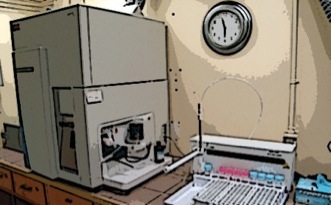Modus operandi
To ensure that the instruments operate at their peak performance, to avoid cross-contamination, and provide an efficient, clean and safe facility, we have developed the following modus operandi for the ICP-MS lab and its associated support laboratories. Access to the facility will only be granted to users who accept these “rules”.
Access to all facilities is restricted to users who have participated in the required training (provided by the Lab Coordinator) and shown satisfactory lab skills. This is determined by the Lab Coordinator and may be revoked at any time if rules are not obeyed. Only the Lab Supervisor can reinstate access rights.
To maintain the instrument at its best performance for the most common use in the Department and to minimize cross-contamination, the following has been decided:
-
1.Users shall provide their own cones, unless analyses are to be performed by the Lab Coordinator
-
2.Samples shall be of sufficient dilution to meet TDS limits. Exceeding these limits will automatically incur an instrument cleaning charge. If TDS is unknown, the Lab Coordinator can perform a semi-quant scan to determine this at minimal charge.
-
3.Organic samples are banned and any organics will need to be oxidized by acid digestion prior to analysis. The clean-lab support facility provides equipment to do this
-
4.Samples shall not be biologically hazardous or radioactive, and all samples and standards brought into the facility shall be removed at the end of the analytical session.
FINNIGAN iCapQ SOLUTION ICP-MS: This instrument is available for simultaneous analysis of a wide suite of element from ultra-trace (down to ppq level) up to lower ppm levels. A reaction cell is installed for removal of interferences, which is currently set up for use with NH3 and He. The ICP-MS interfaces with an auto-sampler with up to 96 sample positions and can be fully automated. Users are expected to provide (after discussion with the Lab Coordinator):
-
•Their own standards, diluted to the appropriate level
-
•Samples, diluted to the appropriate level
-
•The internal reference solution, if used, at 1 ppb concentration
-
•ICP-MS sample cones and inserts
FINNIGAN iCapQ ICP-MS WITH LASER-ABLATION: In this mode, a laser-ablation system is used for sample introduction into the plasma. This allows for solid samples to be analyzed for minor and trace elements. All features of the ICP-MS including the reaction cell are available in this mode. The Lab will provide NIST SRM 610 and 612 glass standards and users shall provide sample cones and inserts.
Modus operandi - ICP-MS facility
Access to all facilities is restricted to users who have participated in the required training (provided by the Lab Coordinator) and shown satisfactory lab skills. This is determined by the Lab Coordinator and may be revoked at any time if rules are not obeyed. Only the Lab Supervisor can reinstate access rights.
LAMINAR FLOW HOOD (FDA 203): This laminar flow hood can be used for trace-element grade wet chemistry, preparation of standards and sample dilution. No evaporation or storage of acids is allowed in this lab
ULTRA-CLEAN WORKSPACE (FDA 216): This is the Department’s clean lab facility and can only be used for manipulation of samples for ultra-clean work. Its dominant purpose is to provide the workspace and consumables required for ultra-trace analyses on the new ICP-MS. Within a Class 100 clean lab, it hosts a laminar flow cabinet and extraction hood suitable for use with acids. Acid evaporation is strictly forbidden in this room, and work with solid powders is restricted to the vestibule. The facility does not provide any consumables, except for low-volume ultra-clean water.
-
•Acid distillation: starting acids should be at least trace-metal grade and are to be provided by the user
PREP LABORATORY (FDA 217/218): The following miscellaneous equipment is offered for general use
-
•Programmable furnace (up to 1100oC): can be used for determination of volatiles in rock powders, etc. Limited extraction is available. Users provide their own appropriate sample containers, although a limited set is present for general use.
-
•Microwave digestion system: for acid digestion of samples in Teflon reaction vessels at elevated temperature and pressure. Users provide their own Teflon vessels.
-
•Perchloric fume hood: for any work involving perchloric acid
-
•BIS flux digester: for digestion of samples in a carbonate or Li-borate flux. Platinum digestion vessels are provided for general use.
Modus operandi - Support laboratories
